Fraunhofer IAO: Business Model Co-Creator
Within the scope of the Project INDiGeR, the Fraunhofer Institute for Industrial Engineering IAO advises stakeholders of complex service networks on the development of innovative business models. To support the consultants’ work we were asked to develop a web-based tool to better coordinate and integrate the interests, resources and tasks of the network members.
Client
Fraunhofer GesellschaftMy Role
UX Design & Project ManagementLaunch
2017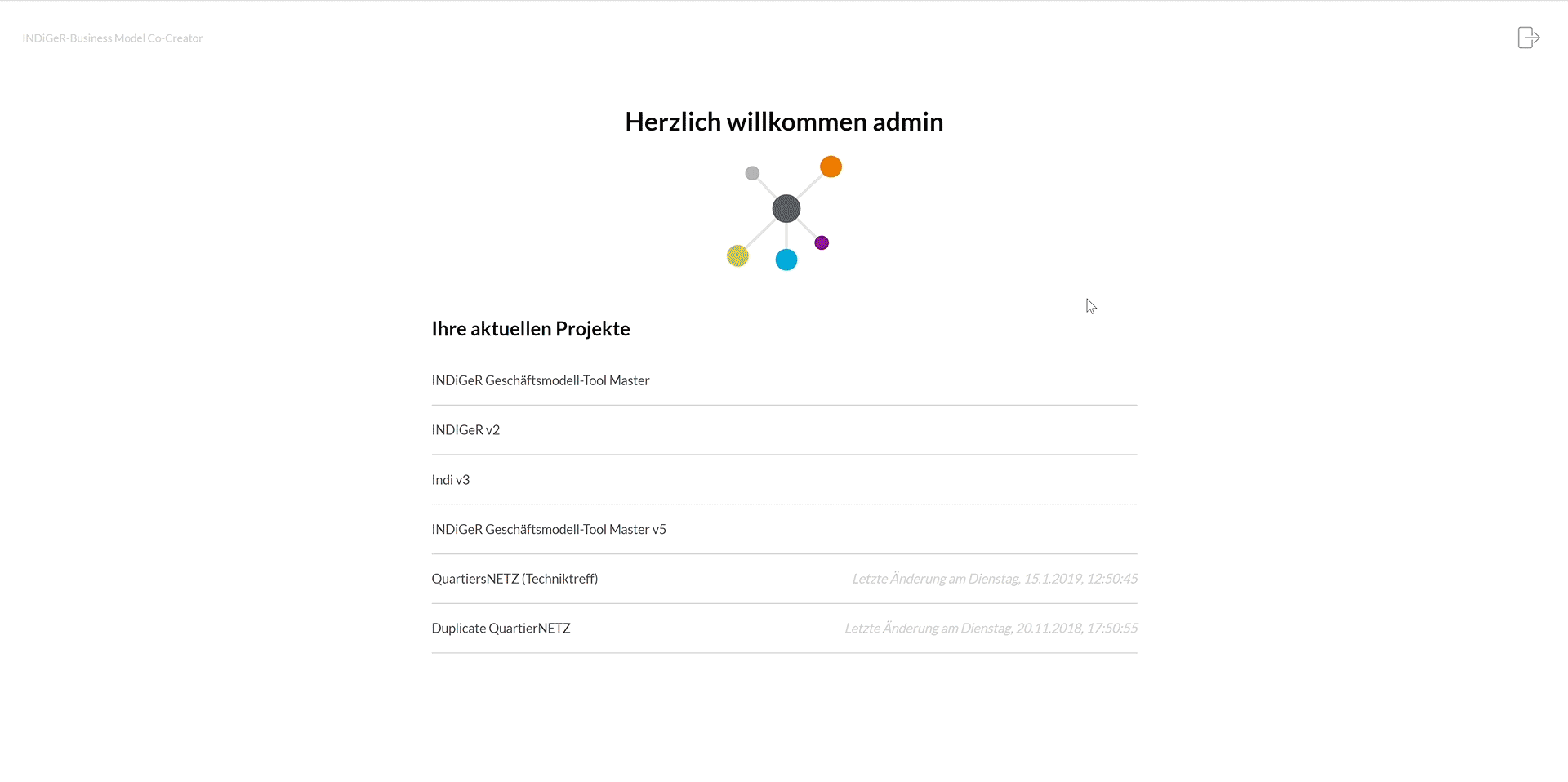
My role
We were realising this project in a team of two - a software engineer and me. So in addition to my job as a UX Designer I was responsible for the project management.
Pitch
Based on a project brief containing detailed requirements and indications on the tool’s visual impression, I developed a rough architecture and some first designs. The clients’ core idea was a circular diagram kind of look with rings representing different business model dimensions and segments representing stakeholders.
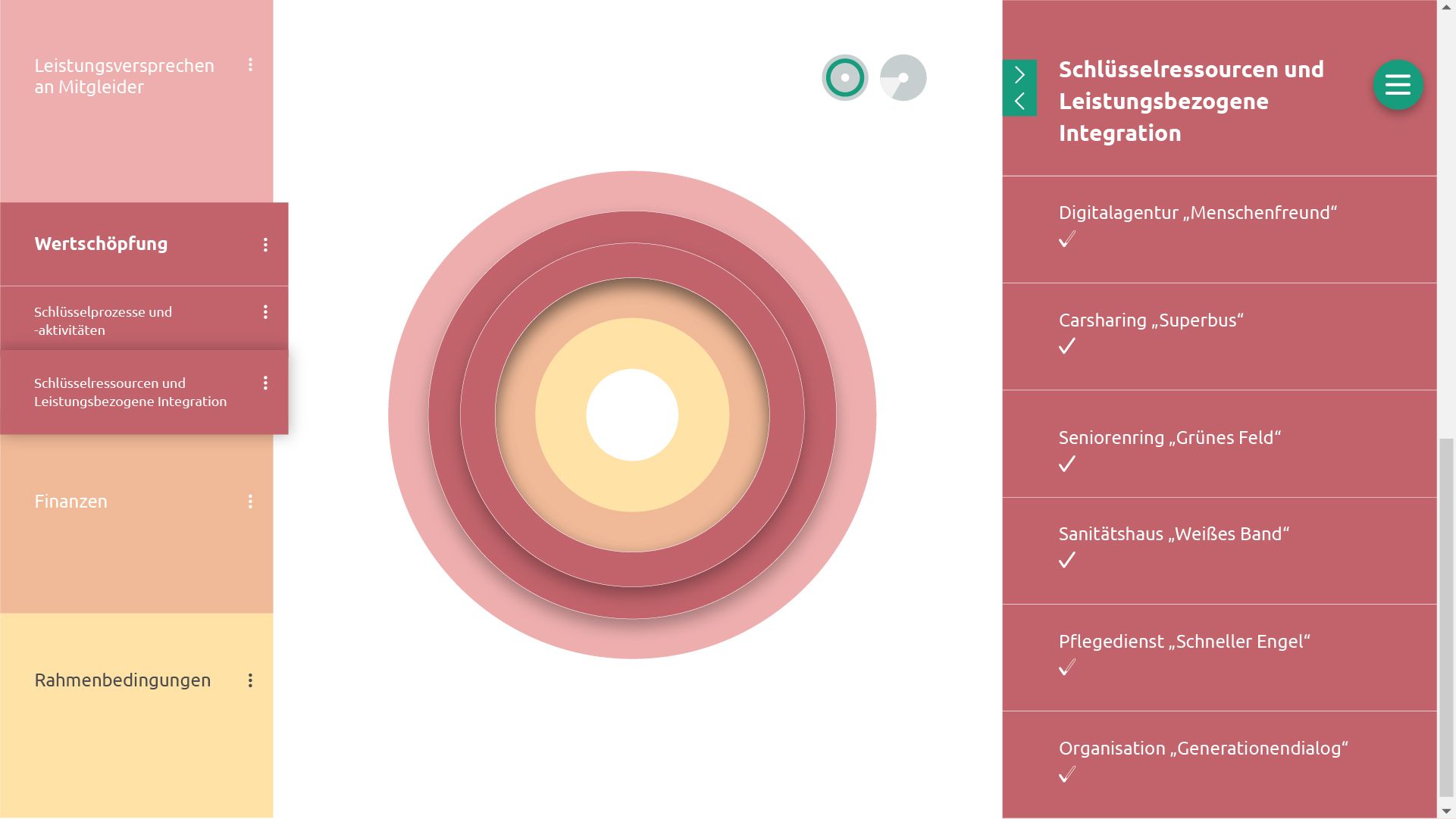
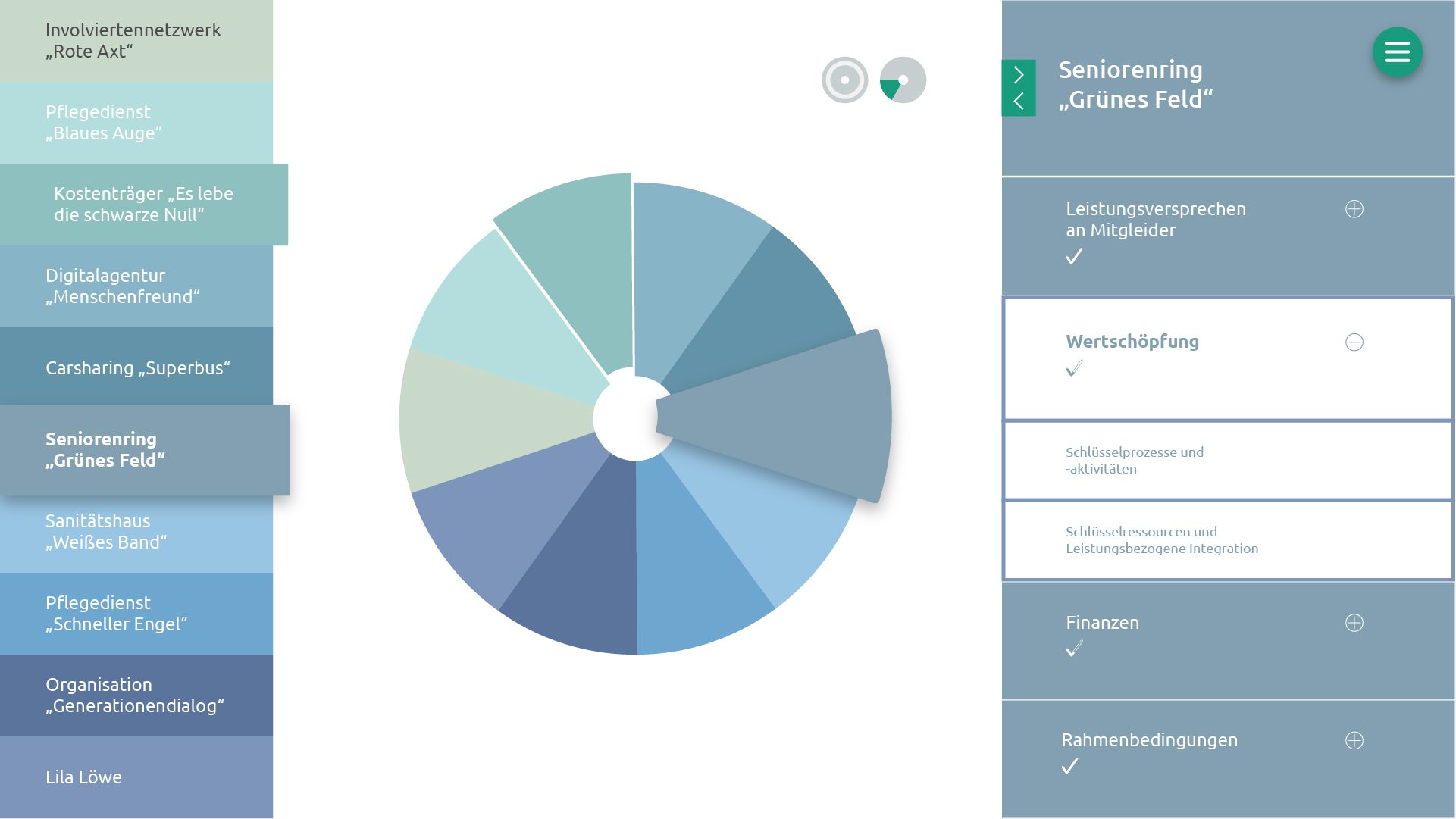
With our first ideas on architecture and visual design, we were able to convince the client and win the pitch.
Understand
What exactly are service networks? What kind of business models are there and what are they for? How do consultants use business models and how does the consulting process look like? These are just a few questions I tackled in the first phase of the project.
“An in-depth research and numerous discussions with the clients helped me to grasp the overall subject. In addition to the project brief, we were provided with a detailed description of all phases of the context of use: from the network members joining together and assigning Fraunhofer with the consulting to the phase of workshop preparation to the actual workshop situation and finally to workshop evaluation. As it was not possible to actually accompany consultants during their process, this detailed description was a great substitute.”

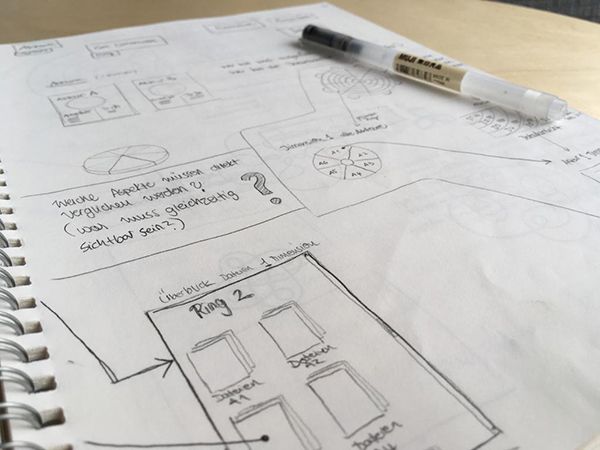
Concept
The main challenge was displaying big amounts of text data in a clearly arranged manner. These data were collected from all stakeholders of a service network through a LimeSurvey. Consultants would have to be able to analyse, compare and rearrange these data with the tool, quickly gain an overview but also dig deeper wherever necessary.
Additionally, the tool would have to be scalable and would have to implement different kinds of business models (Business Model Canvas, St. Galler Dreieck (Magic Triangle), INDiGeR Model), so the content would have to be dynamically adjustable.
Besides collecting and organising data, consultants would have to be able to present and reorganise data in live workshop situations in collaboration with all workshop participants.
So I developed an architecture that would offer two modes: “Working Mode” for the consultants to collect, organise and prepare the data and “Presentation Mode” for the workshop situation.
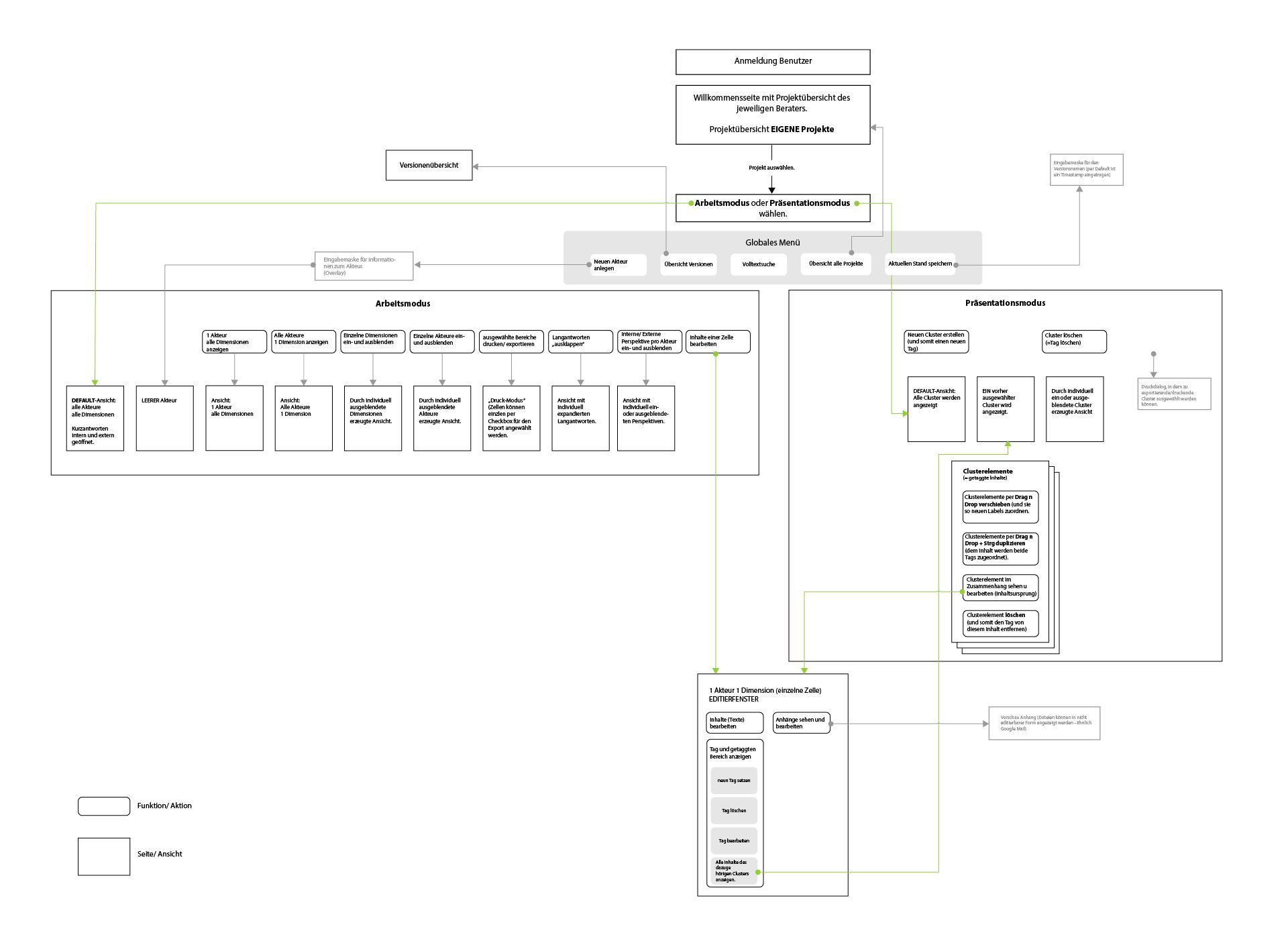
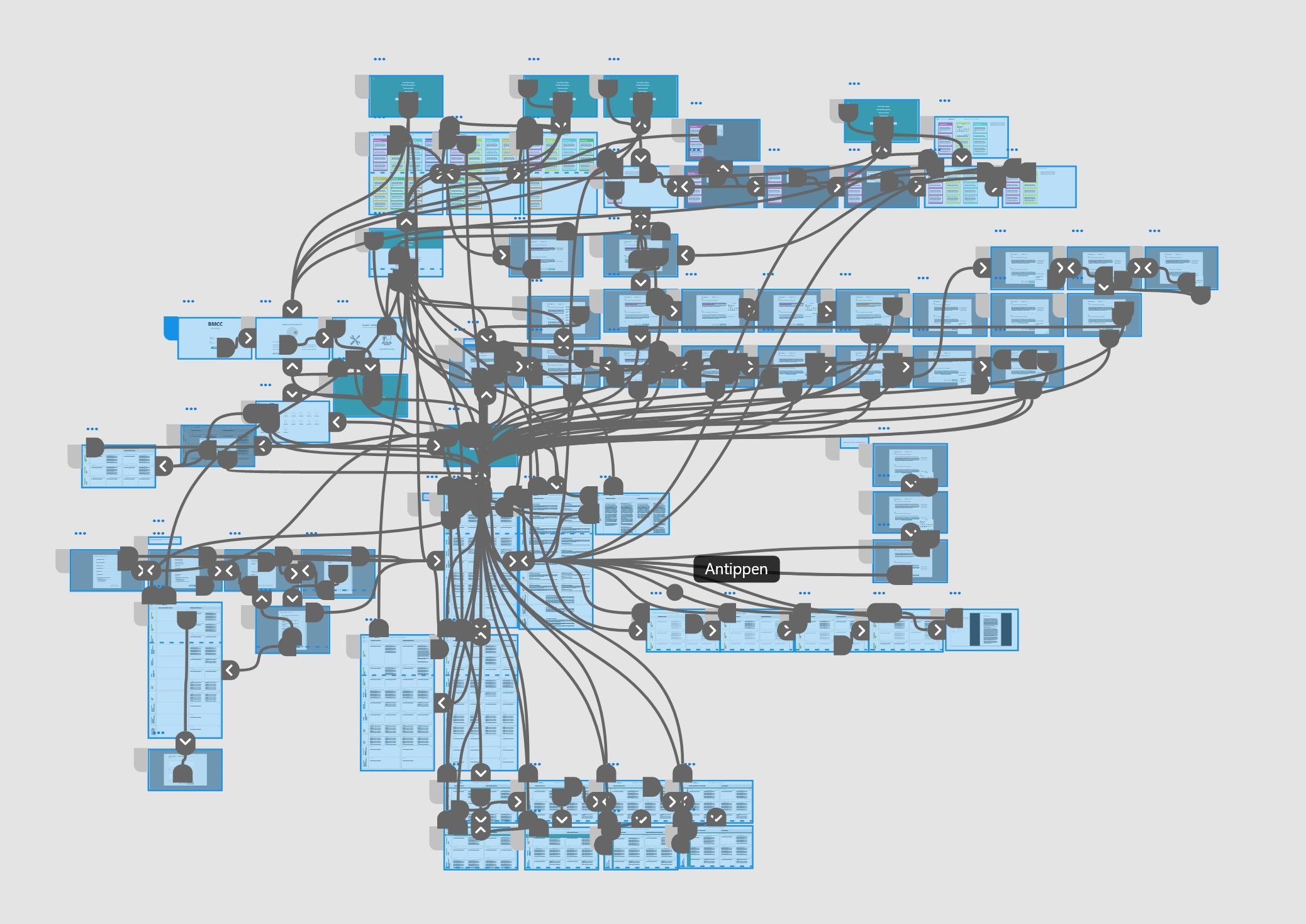
The “Working Mode” would offer a broad overview of all data of all network members.
In the course of my research, I had realised that the initial approach with the circular representation of network members and business model dimensions would not be adequate to meet the tool’s purposes and the users’ needs.
So I decided to work with dynamic tables instead - columns representing network members and rows representing dimensions.
Consultants would be able to create individual views by collapsing or hiding certain content or invoke more detailed information where necessary.
The “Presentation Mode” on the other hand would show the already organised content following some kind of Metaplan look. The tags created by the consultant would now be displayed as cards containing all content that had been tagged. The particular source of each tagged text snippet would be retraceable to view its context where necessary. Cards and text snippets would be moveable via drag and drop, changing the tags accordingly.
Before working on a refined visual design I built a clickable prototype in Adobe XD and shared it with the client.